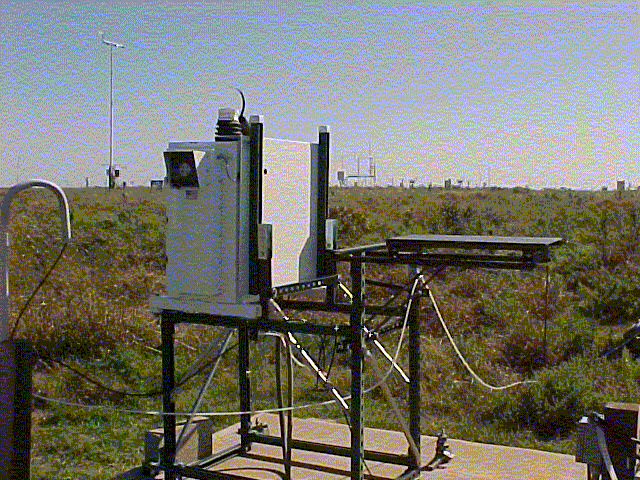Mean and Variance Measurements of Photon Path Length in Oxygen A-Band and Water Vapor Band Provide Insight into Radiative Transfer in Cloudy Conditions
Submitter:
Min, Qilong — State University of New York, Albany
Area of research:
Cloud Distributions/Characterizations
Journal Reference:
Min, Q, and E.E. Clothiaux, Photon path length distributions inferred from rotating shadowband spectrometer measurements at the Atmospheric Radiation Measurements Program Southern Great Plains site, J. Geophys. Res., 108(D15), 4465 doi:10.1029/2002JD002963, 2003.Science
Aerosols, clouds, and water vapor play key roles in the atmospheric energy balance and hydrological cycle. The Department of Energy's Atmospheric Radiation Measurement (ARM) Program sponsors research at instrumented sites around the world to help understand the role and impact of clouds on climate. The vertical extent of a cloud and its total amount of condensed water and/or ice determine how much solar radiation is transmitted through or absorbed by the cloud. Researchers typically quantify this effect of a cloud by measuring the mean (average) photon path through a cloud.
The photon path length is the total straight-line distance that a photon (a tiny bit of solar radiation) travels through the atmosphere before reaching the measurement instrument. It depends on the horizontal and vertical distribution of scatterers in the atmosphere. In general, the thicker a cloud, the larger its mean photon path, because the photons are scattered around by cloud particles, much like tiny balls in a 3D pinball machine. To understand the detailed effects of clouds on solar radiation, researchers need to know not only the mean value of the photon path, but how that photon path value changes in time, which is called the variance. In very homogeneous clouds, the variance is small; in more complex clouds with 3D structure, the variance increases.
Impact
Researchers used the advanced Rotating Shadowband Spectrometer (aRSS) located at ARM's Southern Great Plains (SGP) site in Oklahoma, to retrieve the mean and variance of the photon path length distribution in two spectral bands. Measurements from previous instruments have been used to retrieve the mean photon path length in the oxygen A-band (763 nm). Measurements from the aRSS, which has triple the resolution of previous instruments, allowed the first retrievals of the statistics of the path length distribution, and hence the variance, in a water vapor band (820 nm). Because the scattering properties of cloud particles vary slowly with wavelength in this region of the solar spectrum, researchers can assume that they are the same at both these wavelengths and therefore use the pair of measurements to draw conclusions about the scattering properties of the atmosphere.
For example, this pair of measurements of photon path length distributions both in and near a water vapor band provide information about how scattering processes in clouds affect the absorption of solar radiation by water vapor in the cloud. This in turn permits calculation of the solar heating of the cloud, which can affect the cloud lifetime. Statistics on the mean and variance of the photon path length can be used directly to infer information about cloud and water vapor properties, or indirectly as constraints to model calculations of radiative and cloud properties.
Summary
Analyses of the measurements—taken during two cloudy days in March 2000—indicate that the variance of the photon path length is much more sensitive to vertical cloud structure than is the mean path length. Using the mean and the variance at two wavelengths, the researchers were able to distinguish multi-layer cloud scenes from single layer cloud scenes even when the upper layer was completely shielded from view by the lower layer. Additionally, cirrus cloud layers that were too thin to be detected by millimeter wave cloud radar were detected by the aRRS in the photon path retrievals.
Joint statistics of the mean and variance of the path length distribution in the oxygen A-band and the 820 nm water vapor band provide insight into the physical processes of radiative transfer in the atmosphere. Representing the first time this technique has been applied in a consistent manner, the aRRS measurements will help improve understanding of the 3-dimensional structure of clouds as they relate to the treatment of radiative transfer in climate models for cloudy conditions.


